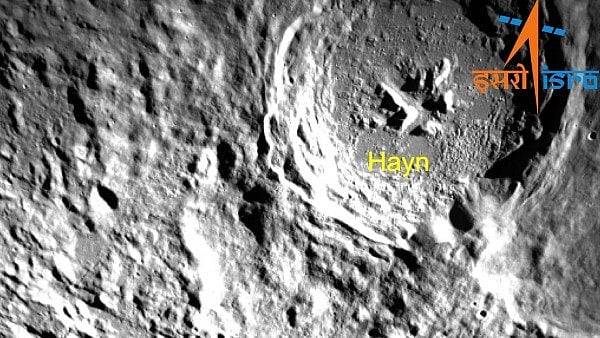
Image of Lunar far side area captured by the Lander Hazard Detection and Avoidance Camera (LHDAC).
Credit: X/@isro
The Indian Space Research Organisation (Isro) on Monday released new images from the lunar far side captured by a hazard-detection camera on board the Chandrayaan-3 lander.
The Lander Hazard Detection and Avoidance Camera (LHDAC) helps the lander identify a safe location – without boulders or deep trenches – for landing within the 4 km x 2.4 km landing site, during its descent ahead of the August 23 touchdown.
The images, captured on August 19, show craters Hayn, Boss L and Bel’kovich, and Humboldtianum, one of the lunar maria, or basaltic plains formed after large impacts.
The LHDAC was developed by Isro at its Space Applications Centre in Ahmedabad. It functions as one of the mission’s lander sensors that include a Laser Doppler Velocimeter and a Lander Horizontal Velocity Camera.
The Chandrayaan-3 lander module is set to commence its powered descent at around 5.45 pm on Wednesday and is scheduled for a 6.04 pm landing. Earlier this month, Isro chairman S Somanath said lowering the lander’s velocity and changing its horizontal direction to facilitate a vertical landing would be critical components of the descent phase.
The mission plan also comprises the provision of a hazard verification during the final leg, to decide whether the lander could land, or move laterally to a maximum extent of 150 metres – to avoid boulders or craters – and land on the alternative spot.
The final deboosting operation with the landing module was done early on Sunday, taking it to a lower orbit of 25 km x 134 km.
This camera that assists in locating a safe landing area -- without boulders or deep trenches -- during the descent is developed by Ahmedabad-based Space Applications Centre (SAC), a major research and development centre of ISRO.